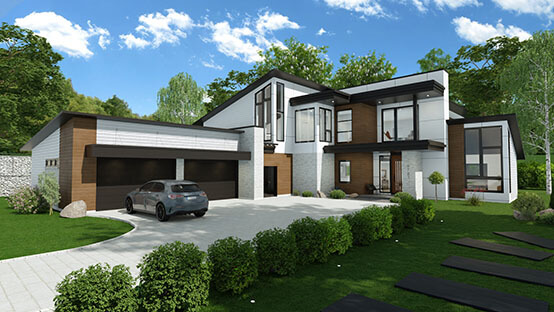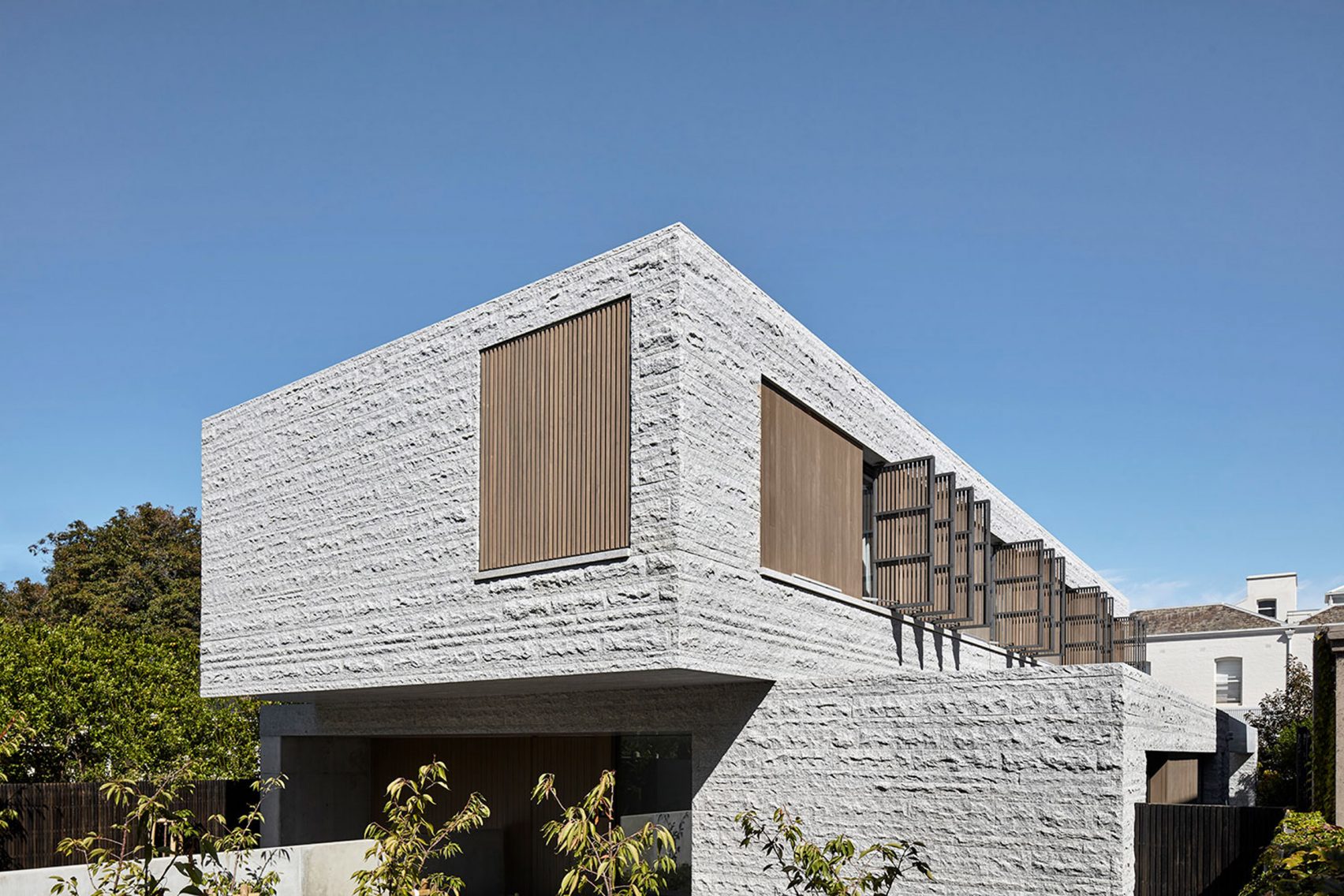Leading Fads in Residential Architecture You Ought To Find Out About
As domestic architecture continues to progress, numerous engaging fads are forming the means we create and populate our home. Secret advancements such as sustainable building methods, the combination of smart home technology, and the rise of modular homes emphasize a significant shift towards both functionality and ecological obligation. In addition, principles like open strategy living and biophilic design are redefining our interaction with space and nature. Recognizing these patterns not only informs style choices but also discloses wider implications for lifestyle and area - residential house architect. What might these technologies imply for the future of domestic living?
Lasting Structure Practices
An enhancing number of residential tasks are accepting lasting building techniques, driven by a growing understanding of ecological impact and power performance. This change is defined by the integration of eco-friendly materials, energy-efficient designs, and cutting-edge construction approaches. House owners and contractors are significantly prioritizing the usage of renewable resources, such as bamboo and recycled steels, which not only decrease the carbon impact but likewise improve the toughness and aesthetic charm of homes.
Including energy-efficient systems is an additional crucial element of lasting building - residential house architect. Attributes such as high-performance insulation, energy-efficient home windows, and solar panels are becoming standard in new household styles. These elements not just add to reduced energy intake yet additionally supply significant long-term financial savings for property owners
Moreover, the design of sustainable homes typically highlights natural light and air flow, reducing the reliance on man-made lighting and environment control systems. Landscape design techniques, such as xeriscaping, more promote sustainability by decreasing water usage.
As the need for lasting living options continues to increase, the household style market is poised to adapt and innovate, making certain that future homes are not only ecologically responsible yet practical and additionally comfy for their residents. - residential house architect
Smart Home Modern Technology
Smart home technology is reinventing the means property owners engage with their living spaces, boosting power, ease, and safety and security monitoring. This ingenious technique incorporates numerous tools and systems, enabling individuals to manage their homes from another location or with automated processes. Central to this trend is the use of smart devices such as thermostats, lights, protection electronic cameras, and devices, all attached by means of the Internet of Points (IoT)
Among one of the most enticing functions of smart home innovation is the ability to tailor settings for optimal power performance. Homeowners can keep an eye on energy usage and adjust home heating, cooling, and illumination based on their routines, significantly reducing utility expenses. Sophisticated security systems furnished with smart locks and monitoring electronic cameras supply peace of mind, allowing remote tracking and informs to potential protection breaches.
Assimilation with voice-activated aides boosts individual experience, permitting property owners to regulate devices with easy voice commands. As innovation remains to evolve, the potential for smart home systems to enhance lifestyle expands, making them a necessary consideration in contemporary household architecture. Inevitably, wise home modern technology is not merely a pattern yet a fundamental shift toward a lot more smart living environments.
Open Principle Living
Open idea living has actually arised as a defining function in modern property design, defined by the removal of standard barriers between spaces. This style approach promotes fluidity and connection within the home, enabling for a smooth shift in between locations such as the kitchen, eating, and living spaces. By eliminating dividers and wall surfaces, open principle formats create a feeling of space, fostering an inviting ambience that improves social communication.

Additionally, this method to residential design lines up with minimalism, focusing on practical simpleness and aesthetic coherence. Home owners appreciate the versatility of these designs, which can be easily adapted to show individual style with furniture arrangement and decoration. As open principle living remains to obtain traction, it stays a testimony to developing household characteristics and the need for homes that boost connection and comfort.
Biophilic Style
Biophilic layout has become increasingly considerable in property architecture, emphasizing the innate link in between humans and nature. visit this page This style approach looks for to integrate natural environments right into living spaces, thus promoting a sense of well-being and improving the top quality of life for passengers. By including features such as natural light, greenery, and natural materials, biophilic style promotes an unified connection between interior atmospheres and the environment.
Crucial element of biophilic style consist of large windows that offer unobstructed sights of outdoor landscapes, living walls that present plant into interiors, and open layout that encourage air flow and natural light penetration. Water features, both within and outside the home, serve to produce comforting ambiences and enhance sensory experiences.
Additionally, the use of lasting materials not only supports environmental stewardship yet likewise adds to healthier interior air high quality. As awareness of ecological concerns boosts, homeowners are progressively prioritizing layouts that reflect their link to nature. Basically, biophilic layout not just raises aesthetic allure yet also addresses emotional and psychological needs, making it a crucial pattern in contemporary residential style.
Modular and Prefab Homes

In addition, prefab and modular homes are made with sustainability in mind. Many producers make use of eco-friendly products and energy-efficient systems, such as photovoltaic panels and progressed insulation strategies, adding to reduced energy intake and reduced energy expenses for property owners. The adaptability of layout choices enables for personalization, dealing with diverse aesthetic preferences and functional requirements.
As the need for budget-friendly real estate remains to increase, modular and prefab homes present a sensible option, dealing with both financial and environmental obstacles. Areas are progressively recognizing the possibility of these frameworks, integrating them right into country and urban setups. Generally, visit their website the fad towards prefab and modular homes represents a change toward more lasting, reliable, and versatile living atmospheres, making them a pivotal facet of contemporary household design.
Verdict
Finally, the advancing landscape of property architecture showcases considerable trends that prioritize technology, sustainability, and wellness. Sustainable structure techniques and wise home modern technologies enhance efficiency and convenience, while open idea living and biophilic layout foster social interaction and a connection to nature. Moreover, the surge of prefab and modular homes uses personalized and budget-friendly remedies, reflecting a wider change in the direction of practical and accountable living. These trends collectively highlight a commitment to developing innovative and harmonious domestic atmospheres.
Trick growths such as sustainable structure methods, the combination of smart home technology, and the rise of modular homes emphasize a substantial shift in the direction of both capability and ecological responsibility.The rise of prefab and modular homes has changed the domestic architecture landscape, offering cutting-edge options for effective and sustainable living.Furthermore, prefab and modular homes are created with sustainability in mind. In general, the fad towards modular and prefab homes signifies a change towards extra lasting, efficient, and versatile living atmospheres, making them a pivotal facet of contemporary property style.
Sustainable structure methods and smart home modern technologies enhance performance and convenience, while open concept living and biophilic layout foster social interaction and a link to nature.